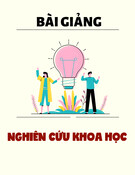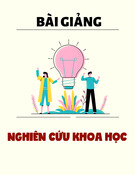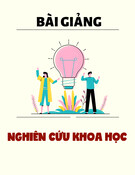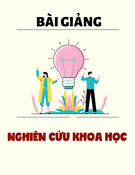
Pegem Journal of Education and Instruction, Vol. 11, No. 4, 2021 (pp. 209-218)
REVIEW ARTICLE WWW.PEGEGOG.NET
Ab s t r A c t
Systematic literature review (SLR) relies on a thorough and auditable methodology to reduce bias and ensure high reliability.
This bias can be reduced through four main processes namely identification, screening, eligibility and inclusion. The SLRs
discussed in this article are related to Pupils’ misconceptions and errors in trigonometry. The articles used in this review were
accessed from January 2011 to January 2021. Five databases were used to screen past study articles, namely Scopus, ERIC,
Dimensions, Web of Science (WoS), and Google Scholar. The systematic literature review procedure included search strategies,
selection criteria, selection process, data collection, and data analysis. A total of 26 articles were identified through set criteria
such as year of publication and type of language. The study found articles that determine the misconceptions in trigonometry
and ways to eliminate them. The findings also discovered that learning trigonometry using manipulative materials and digital
form software could eliminate misconceptions. Therefore, further research is needed and more general keywords should be used
to identify the appropriate methods in determining and eliminating misconceptions in learning trigonometric components.
Keywords: Misconceptions, error, trigonometry components, mathematical concepts, mathematical achievement
A Systematic Review on Pupils’ Misconceptions and Errors
in Trigonometry
Nurjailam Hamzah1, Siti Mistima Maat1*, Zanaton Ikhsan1
1Faculty of Education, University of Kebangsaan, Malaysia
In t r o d u c t I o n
From the cognitive point of view, students are already
capable of thinking abstractly at the formal operation level,
as highlighted by Piaget. At the same time, students should
be able to think systematically to solve problems. Teachers
also face problems related to a concept or skill in mathematics
(Luneta & Giannakopoulos, 2019) where this lack of knowledge
plays an important role in misconceptions (Ozkan & Ozkan,
2012). Many studies in the mathematics education field explain
that misconceptions are like “snowballs” (Makonye & Luneta,
2014). This misconception will continue to occur to most
students in more complex learning topics. Existing knowledge
related to mathematical concepts that are not well mastered
by students will give a negative impact on new learning topics.
This is because each new learning topic will involve a variety
of new mathematical concepts. Such misconceptions need to
be identified by teachers immediately so that misconceptions
can be reduced on the next topic (Rohani et al., 2014).
The teaching and learning process plays an important role
in helping students to overcome misconceptions. Teachers
need to have a variety of teaching strategies by focusing on
the misconceptions faced by their students (Chua et al., 2016).
This is because diverse teaching strategies in identifying
misconceptions can result in sustained positive achievement as
compared to teachers who adopt traditional teaching methods
(Makonye & Luneta, 2014). Therefore, the systematic literature
review (SLR) in this study should focus on helping students on
identifying and eliminating misconceptions.
MAt e r I A l s A n d Me t h o d s
The study used the flow diagram of Preferred Reporting
Items for Systematic Reviews and Meta-Analyses (PRISMA)
in the selection of articles related to determining the types
of misconception and misconceptions elimination. Five
databases were used in the screening of past study articles,
namely Scopus, ERIC, Dimensions, Web of Science (WoS),
Google Scholar. The systematic literature review procedure
included search strategies, selection criteria, selection process,
data collection, and data analysis of articles.
Article Search Strategy
Leading databases, namely Scopus, ERIC, Dimensions, WoS,
and Google Scholar were used in searching articles for the SLRs
conducted. The search began with identifying only English
keywords that match the misconceptions. Misconception
words that are synonymous with misconceptions such as
concept errors and misunderstandings are also used in the
search strings using the Boolean operator OR. The same
method was also used for the keywords trigonometry and
mathematics. The next step was using the Boolean operator
Corresponding Author e-mail: sitimistima@ukm.edu.my
https://orcid.org/0000-0002-5507-9081
How to cite this article: Hamzah N, Maat SM, Ikhsan Z, (2021).
A Systematic Review on Pupils’ Misconceptions and Errors in
Trigonometry. Pegem Journal of Education and Instruction, Vol. 11,
No. 4, 2021, 209-218
Source of support: Nil
Conflict of interest: None.
DOI: 10.47750/pegegog.11.04.20
Received: 30.06.2021
Accepted: 31.08.2021 Publication: 01.10.2021

A Systematic Review on Pupils’ Misconceptions and Errors in Trigonometry
Pegem Journal of Education and Instruction, ISSN 2146-0655
210
AND to combine the three keywords, namely misconception,
trigonometry, and mathematics to find related articles.
The article search includes articles published from January
2011 to January 2021. Based on these keywords, the articles
presented in the database were related to misconceptions for
trigonometric components in mathematics learning. Table 1
shows the search methods performed using Boolean operators
in each database and the number of articles found.
Article Selection Criteria
In order to obtain articles that meet the research criteria,
the articles selected were set in terms of publication year,
language, type of reference material and field of study. Table
2 shows the criteria for acceptance and rejection of articles.
The criteria selected for the year of publication was within
the latest 10 years from January 2011 to January 2021. The
selection of articles was limited to 10 years because topics
and current issues are still being discussed within the time
frame. Next, all articles included in this study were articles
in English from the selected databases. Selected articles were
in English because the selected databases only publish articles
in English. Meanwhile, the study conducted only used journal
articles and excluded theses, proceedings, conferences, books,
and research highlights in the selection of reference materials.
Journal articles were used as a reference material in this study
because they have complete and detailed reporting.
Article Selection Process
Figure 1 shows a flow diagram of the article selection process
adapted from the PRISMA flow diagram (Tawfik et al., 2019).
A total of 301 articles were identified from five databases in
this study. Thereafter, the articles were screened using pre-
defined criteria before entering the qualification stage for a
more thorough and detailed screening.
Next, based on the accompanying article selection process
flow diagram, there were four additional criteria for article
exclusion before the SLR can finally be conducted. First, was
articles that do not have full text. Second, was title of articles
that does not fit the context of the study. Third, was similar
articles from five databases, and fourth, was articles that do
not meet the acceptance criteria of the study, such as articles
that do not have empirical data and reviews. Meanwhile, for
the additional acceptance criteria, the first was articles that
have full text, the second was the title of the articles meets
the context of the study, the third was the articles examined
were appropriate to the study context and have no duplication.
The final process included articles that meet the acceptance
criteria, such as articles that have empirical data and were not
in the form of reviews.
A search on databases such as WoS, Scopus, Dimensions,
ERIC, and Google Scholar found a total of 29, 219, 10, 30,
and 13 articles, respectively. The process of removing several
identical articles that exist in the search volume was done
whereby 110 duplicate articles were found. Duplication of
articles occurred in terms of title name, author name, year,
and similar content. The remaining number of articles after
this process was only 191.
Subsequently, a total of 87 articles unrelated to the study
were removed. The articles were removed since the information
provided on the title and abstract was irrelevant to the research
study. Unrelated articles on misconceptions that occurred in
the topic of trigonometry learning were eliminated. A total of
104 articles remained for review at the next evaluation process.
A total of 26 relevant articles were found for thorough
analysis after reading the articles’ contents, namely the title,
abstract, citation, method, study findings, and conclusion.
Meanwhile, a total of 78 articles were excluded in this process,
which included non-research articles, namely articles that
Table 1: The search string used for the systematic review process
Database Keywords used
Numbers of
Articles Found
SCOPUS “misconception*” OR “error*” AND “trigonometry” AND “mathematics*” AND (LIMIT-TO (
PUBYEAR,2021) OR
LIMIT-TO (PUBYEAR,2020) OR LIMIT-TO (PUBYEAR,2019) OR LIMIT-TO (PUBYEAR,2018) OR
LIMIT-TO (PUBYEAR,2017) OR LIMIT-TO (PUBYEAR,2016) OR LIMIT-TO (PUBYEAR,2015) OR
LIMIT-TO (PUBYEAR,2014) OR LIMIT-TO (PUBYEAR,2013) OR LIMIT-TO (PUBYEAR,2012) OR
LIMIT-TO (PUBYEAR,2011) )
219
Web of Science (WOS) TS=((“misconceptions” OR “error*”)AND
(«trigonometry»))) ANDLANGUAGE:(English)AND
DOCUMENTTYPES:(Article)Indexes=SCI-XPANDED,
SSCI, A&HCI, CPCI-S, CPCI-SSH, BKCI-S, BKCI-SSH, ESCI Timespan=2011-2021
29
Dimensions “misconception” OR “misconceptions” OR “errors” OR “error” AND “trigonometry” AND
“mathematics” AND 2021
OR 2020 OR 2019 OR 2018 OR 2017 OR 2016 OR 2015 OR 2014 OR 2013 OR 2012 OR 2011 AND Article
10
ERIC “misconception” OR “error” OR “errors” AND “trigonometry” since 2011 30
Google Scholar allintitle: (“trigonometry”) (“misconception” OR “misconceptions” OR “error” OR “errors”) 13

A Systematic Review on Pupils’ Misconceptions and Errors in Trigonometry
Pegem Journal of Education and Instruction, ISSN 2146-0655 211
Table 2: Criteria for acceptance and rejection of articles
Criteria Acceptance Rejection
Year of Publication Publications from January 2011 to January 2021 Publication before January 2011.
Language English Language Malay Language, Indonesian Language and others language
Type of Reference Material Journal Articles Theses, Proceedings, Conferences, Books
Field of Study in Journal Articles Trigonometry in mathematics learning Apart from trigonometry in mathematics learning
Number of articles identified through a search in
the database: n = 301
Database Bilangan Artikel
Web of Science 29
Scopus 219
Dimensions 10
Eric 30
Google Scholar 13
The number of articles remaining after the
process of eliminating duplicate articles:
n= 191
The number of articles remaining after the
research process on the title and abstract of the
article:
n= 104
The number of articles remaining after the
review process of the entire text of the article:
n= 26
Number of articles remaining after the evaluation
process:
n= 26
Article statistics based on research methods: (n=26)
Qualitative (11)
Quantitative (10)
Mixed Mode (5)
Article statistics based on the purpose of
misconceptions in trigonometry: (n=26)
Identify misconceptions in trigonometry (14)
Eliminate misconceptions in trigonometry (11)
Both (1)
The process of removing
duplicate articles:
n = 110
The process of deleting
irrelevant articles:
n = 87
The process of deleting irrelevant articles:
n = 78
• Not a Research (65)
• The article focuses on the application of Trigonometry in
the fields of engineering, mechanics and scientists (8)
• The article focuses on the application of Trigonometry in
the field of computer software (3)
• The article focuses on the differences in textbook content in
Singapore and Indonesia (1)
• The article focuses on the differences in the content of the
activity book (1)
The process of synthesizing articles by looking at the
methods and findings of the study conducted:
n = 26
(IDENTIFICATION)
(SCEENING)
(ELIGIBILITY)
(INCLUDED)
Figure 1: The PRISMA flow diagram of the study
focused only on the application of trigonometry in the fields
of engineering, mechanics, scientists, and computer software;
articles that only compared trigonometry topics in textbooks;
and articles that focused on differences in activity book
content.
The elimination of articles was done by examining the
content on the reliability of each instrument conducted on
the pilot study, data collection methods, and study findings.
The remaining articles in this final evaluation process are
only 26 articles. Based on Figure 1, the qualitative method was

A Systematic Review on Pupils’ Misconceptions and Errors in Trigonometry
Pegem Journal of Education and Instruction, ISSN 2146-0655
212
implemented in 11 articles, whereas the quantitative method
was implemented in 10 articles. The mixed-mode research
method was used in five remaining articles. In addition, the
article analysis statistics show that 14 articles are related to
determining misconceptions. Meanwhile, the remaining
11 articles are related to eliminating misconceptions. The
PRISMA flow diagram also shows that only one article
was chosen to identify and to eliminate misconceptions in
trigonometry components.
The number of studies in determining the misconceptions
that occur is higher than the studies in eliminating
misconceptions. This is because the process of determining
the misconceptions plays an important role in obtaining
information related to conceptual knowledge and procedural
skills that are available among students (Law et al. 2015). Since
the misconceptions that occur are a challenge to students,
thus a few steps to determine the misconceptions need to be
done by teachers at the beginning stage of learning (Luneta
& Giannakopoulos, 2019; Veloo et al., 2015).Therefore, after
undergoing screening and research on the articles that have
been downloaded, 26 articles were identified. A total of 26
articles have met all the selection criteria and were included
in the SLR study conducted.
Data Collection And Data Analysis
Data collection was conducted using 30 articles obtained from
five leading databases, namely WoS, Scopus, Dimensions,
ERIC, and Google Scholar. The data were collected by
extracting the title, author name, year, purpose of the study,
and misconceptions in learning trigonometry for each
previous study article into a table constructed. Data analysis
was conducted using the constructed table and by categorising
the misconceptions in learning trigonometry used by each
article. Furthermore, the results of the data analysis conducted
will be presented in the form of tables and bar graphs. Table 3
shows the list of past study articles along with the name of the
author used in the study conducted. All selected articles were
based on pre-determined acceptance and rejection criteria.
Based on the data analysis of the SLR studies conducted, the
most frequent misconceptions in learning trigonometry will be
used to form the conceptual framework for the research. The
conceptual framework constructed can be used as a reference
and to contribute to the literature section of the study in the
future. Table 3 shows an analysis of studies on misconceptions
in trigonometry. A total of 11, 10, and 5 articles, respectively
were articles conducted through quantitative, qualitative, and
mixed methods. Of the total of 26 articles, 14, 11, and 1 articles
were conducted, respectively with the aim of determining the
type of misconception, eliminating misconception, and with
both purposes.
FI n d I n g s A n d dI s c u s s I o n o F th e st u dy
The main objective of the SLR study is to identify the types of
misconceptions that involve trigonometric components. The
second objective is to identify methods, strategies or techniques
used to eliminate misconceptions in the trigonometric
component. In addition, the study also developed a conceptual
framework based on the most frequently used methods in
determining misconceptions by past researchers.
Determining Misconceptions
A total of 11 articles from the SLR used tests in determining
misconceptions. Three of the articles used diagnostic tests in
determining misconceptions found among students (Ahmad
et al., 2018; Andika et al., 2017; Mensah, 2017). In addition,
there are 13 articles from the literature review highlights
that showed past researchers conducting interviews in
determining misconceptions. The interviews conducted were
aimed at determining the types of errors and misconceptions
involved when solving problems related to trigonometry
(Mensah, 2017). Next, there are seven articles from the SLR
that used observational methods in determining the types of
Instrument Analysis of Data
Findings
• Interview
• Test
• Observation
Newman's error
analysis + 2 types
of misconceptions
Types of Misconceptions
Type-R (Reading)
Type-C (Comprehension)
Type-T (Transformation)
Type-P (Process Skill)
Type-E (Encoding)
Type-L (Language)
Type-N (Careless)
Figure 2: The conceptual framework in determining types of misconceptions

A Systematic Review on Pupils’ Misconceptions and Errors in Trigonometry
Pegem Journal of Education and Instruction, ISSN 2146-0655 213
Table 3: An analysis of studies on misconceptions in trigonometry (n=26)
No. Authors / Years Title QN QL MM D E
1. (Ulyani & Qohar, 2021) Development of manipulative media to improve students’
motivation and learning outcomes on the trigonometry topic
√ √
2. (Nanmumpuni &
Retnawati, 2021)
Analysis of Senior High School Student’s Difficulty in Resolving
Trigonometry Conceptual Problems
√ √
3. (Ngu & Phan, 2020)
mathematics is
considered as being
“pure theoretical”
(Becher, 1987
Learning to Solve Trigonometry Problems That Involve Algebraic
Transformation Skills via Learning by Analogy and Learning by
Comparison
√ √
4. (Hadi & Faradillah,
2020)
Application of Discovery Learning Method in Mathematical Proof
of Students in Trigonometry.
√ √
5. (Hidayati, 2020) Analysis of Student Errors in Solving Trigonometry Problems √ √
6. (Prabowo et al., 2019) Field-independence versus field-dependence: A serious game on
trigonometry learning
√ √
7. (Sari & Wutsqa, 2019) Analysis of student’s error in resolving the Pythagoras problems √ √
8. (Aminudin et al., 2019) Engaging problems on trigonometry: Why were student hard to
think critically?
√ √
9. (Maknun et al., 2019) From ratios of right triangle to unit circle: An introduction to
trigonometric functions
√ √
10. (Fahrudin et al., 2019) Profile of students’ errors in trigonometry equations. √ √
11. (Bernard et al., 2019) Development of high school student work sheets using VBA for
microsoft word trigonometry materials
√ √
12. (Ahmad et al., 2018) The Analysis of Student Error in Solve the Problem of Spherical
Trigonometry Application
√ √
13. (Prabowo et al., 2018) Interactive Multimedia-based Teaching Material for Trigonometry. √ √
14. (Nabie et al., 2018)94
males
Trigonometric Concepts : Pre-Service Teachers √ √
15. (Dewanto et al., 2018) Studentsr Error Analysis in Solving The Math Word Problems
of High Order Thinking Skills (HOTS) Type on Trigonometry
Application
√ √
16. (Usman & Hussaini,
2017)
Analysis of Students’ Error in Learning of Trigonometry Among
Senior Secondary School Students in Zaria Metropolis, Nigeria
√ √
17. (Andika et al., 2017) Analysing Diagnostic Assessment on the Ratio of Sine in a Right
Triangle
√ √
No. Authors / Years Title QN QL MM D E
18. (Mensah, 2017) Ghanaian Senior High School Students’ Error in Learning of
Trigonometry.
√ √
19. (Karthikeyan, 2017) Trigonometry Learning For the School Students in Mathematics √ √
20. (Centillas & Larisma,
2016)
Error Analysis of Trigonometry Students in a Technological
University
√ √ √
21. (May & Courtney,
2016)
Developing meaning in trigonometry √ √
22. (Ibrahim & llyas, 2016) Teaching a concept with GeoGebra: Periodicity of trigonometric
functions
√ √
23. (Jorda & De los Santos,
2015)
Effect of computer game-based learning on the performance in
trigonometry of the ESEP high school students
√ √
24. (Siyepu, 2015) Analysis of errors in derivatives of trigonometric functions √ √
25. (Yusha’u, 2013a) Difficult Topics in Junior Secondary School Mathematics :
Practical Aspect of Teaching and Learning Trigonometry
√ √
26. (Tuna & Kacar, 2013) The effect of 5E learning cycle model in teaching trigonometry
on students’ academic achievement and the permanence of their
knowledge.
√ √

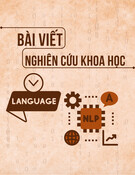
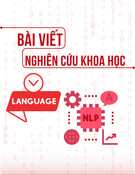


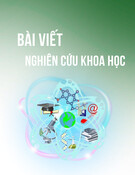
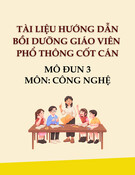
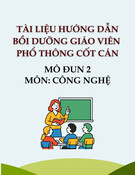


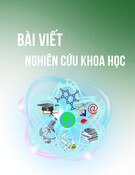



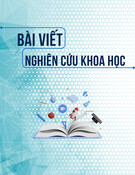

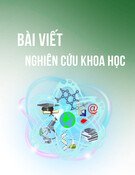

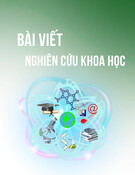


![Định hướng giáo dục STEM trong trường trung học: Tài liệu [chuẩn/mới nhất]](https://cdn.tailieu.vn/images/document/thumbnail/2025/20251124/dbui65015@gmail.com/135x160/25561764038505.jpg)
